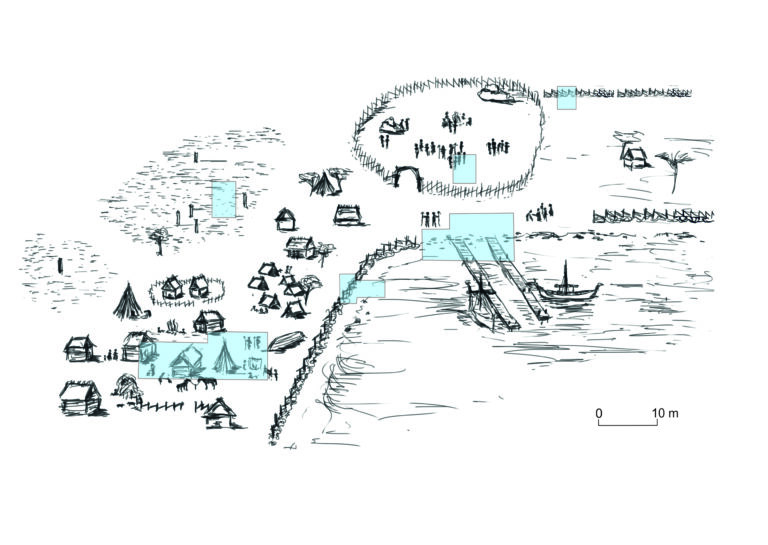
The southern coast of Saaremaa is well-indented but flat, which accounts for the scarcity of suitable locations for harbours. An area suited for landing was, presumably, in the vicinity of Asva where a deep bay stretched inland, close to the arable lands. Here, at the site of a Bronze Age fortified settlement, another hillfort was erected in the 6th century and used until the 9th century. It was probably connected with a convenient harbour site somewhere in the neighbourhood.
The exact location of the 6th–9th century landing site near the Asva hillfort has yet to be identified, however, a harbour site has been found in Viltina, at a distance of 1.2 km. The site was excavated and dated to the 11th, early 12th century. The Viltina Rutiränk stone grave was only 50 metres from the harbour site. Several other, smaller graves are known in the area, predominantly dating from the period between the 11th and the 12th centuries. It is interesting to note that the toponym ‘Linnamäe põld’ (Hillfort/Town Field) has been registered near the site. According to the local folklore, the field near the stone grave used to be “an actual city”.


The Viltina harbour site was registered in 1999 and excavated in 2004–2006 by Marika Mägi. The total area of the site may have been about 0.4 ha. Six excavations were conducted in different places, with a total area of 330 m². The largest trench was placed on the western side of the harbour site where remains of a dense cluster of light buildings as well as several fireplaces came to light. The site had been surrounded by a fence with a stone foundation, identified in several smaller trenches.
The shore had been dredged in at least three places. One of such artificially deepened places was excavated. Lines of stones along the slope, as well as some post places surrounded by stones, indicated two piers built at a distance of 4.2 m from each other. The area near the piers had been cleared of stones. A minor excavation there yielded just a few finds and heavily trampled soil, suggesting that the area was used for meetings.


The northern part of the harbour site was bordered by stone graves characteristic of the 11th–12th-century Saaremaa. The excavations unearthed conventional cremation burials as well as two 11th-century cenotaphs. Individual cremations were also found within the fence surrounding the harbour site, including, very unusually for Saaremaa, one deposited in a clay vessel.
Beside burials, the Viltina finds predominantly consisted of dress accessories, pottery, and animal bones. Over a hundred boat rivets or rivet fragments were recovered along with some weights and dirhams. A distinct area with a diameter of about 6 m yielded numerous boat rivets, nails, a few tools, and animal bones – all interpreted as waste from a carpenter’s workshop.
The cultural layer of the site was generally very thin and in some places completely missing which, combined with the absence of oven remains, suggests that the place was used periodically. Thus, the most plausible interpretation of the Viltina harbour site is that it functioned in part as a ritual centre, and in part as a pragmatic place of assembly with the main access from the sea.



